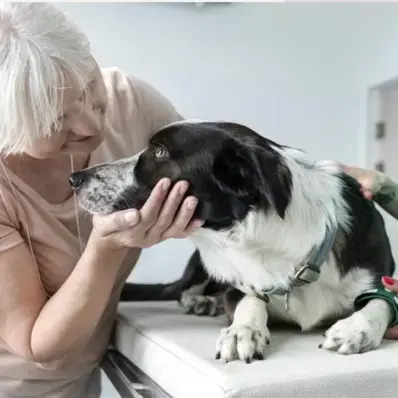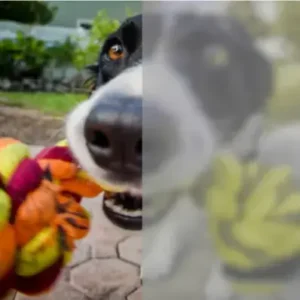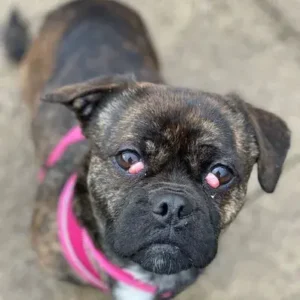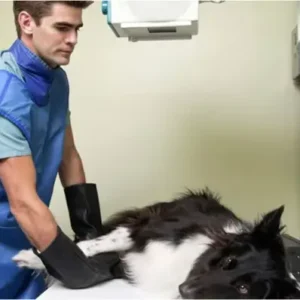Common Types of Cancer in Dogs
Some types of cancer are more common in dogs than others. Here are a few of the most frequently diagnosed cancers in pets:
- Lymphoma: A type of cancer that affects the lymphatic system, lymphoma is one of the most common cancers in dogs. It can cause swollen lymph nodes, lethargy, and weight loss.
- Mast Cell Tumors: These are tumors that form in mast cells (a type of white blood cell). They can appear on the skin and, if left untreated, can spread to other parts of the body.
- Osteosarcoma (Bone Cancer): A common form of cancer in large breed dogs, osteosarcoma primarily affects the bones. Symptoms include lameness and swelling near the affected area.
- Hemangiosarcoma: This cancer affects blood vessels and can spread to vital organs such as the liver and spleen. It is often diagnosed in older dogs and can cause sudden internal bleeding.
- Breast Cancer: Female dogs that have not been spayed or who were spayed later in life are more prone to developing mammary gland tumors. These can be benign or malignant.
Each type of cancer has different symptoms and treatment options, making it crucial to identify the disease early.
Signs and Symptoms of Cancer in Dogs
While the signs of cancer in dogs vary depending on the type, here are some general symptoms to watch for:
- Lumps or bumps: New or changing growths under the skin could be a sign of a tumor.
- Changes in appetite: If your dog suddenly loses interest in food or experiences weight loss, it could indicate a health issue.
- Unexplained weight loss: Sudden weight loss, especially if paired with lethargy, can be a red flag.
- Difficulty breathing, coughing, or sneezing: Respiratory issues can point to cancers affecting the lungs or throat.
- Changes in behavior: If your dog becomes unusually lethargic or seems to be in pain, it might be a sign of cancer.
- Bleeding or discharge: Unexplained bleeding, especially in the nose or from the anus, could be linked to cancers like hemangiosarcoma.
Risk Factors for Cancer in Dogs
While cancer can affect any dog, some are more prone due to certain factors:
- Age: Older dogs are at a higher risk, as the chances of cancer increase with age.
- Breed: Certain breeds, like Golden Retrievers, German Shepherds, and Boxers, are more predisposed to developing cancer.
- Genetics: Dogs with a family history of cancer are more likely to develop it themselves.
- Environmental Factors: Exposure to secondhand smoke, chemicals, or excessive sun can increase the risk of certain cancers.
Breeds Prone to Cancer
While any dog can develop cancer, some breeds are genetically more susceptible than others. Understanding which breeds are at higher risk can help owners take preventive measures and monitor for early signs.
Below is a table highlighting common cancer-prone dog breeds and the types of cancer they are most likely to develop.
| Breed | Common Cancer Types |
| Golden Retriever | Lymphoma, Hemangiosarcoma, Mast Cell Tumors |
| Boxer | Mast Cell Tumors, Lymphoma, Brain Tumors |
| Rottweiler | Osteosarcoma (Bone Cancer), Lymphoma |
| Bernese Mountain Dog | Histiocytic Sarcoma, Mast Cell Tumors |
| German Shepherd | Hemangiosarcoma, Osteosarcoma, Lymphoma |
| Labrador Retriever | Lymphoma, Mast Cell Tumors, Hemangiosarcoma |
| Great Dane | Osteosarcoma (Bone Cancer) |
| Doberman Pinscher | Mammary Cancer, Prostate Cancer, Hemangiosarcoma |
| Scottish Terrier | Bladder Cancer (Transitional Cell Carcinoma) |
| Saint Bernard | Osteosarcoma (Bone Cancer) |
How is Cancer Diagnosed in Dogs?
Diagnosing cancer in dogs usually involves a combination of tests, including:
- Physical Examination: Your veterinary oncologists will palpate the body for lumps and examine any visible symptoms.
- Blood Tests: These tests can help detect abnormalities in your dog’s blood cell counts, liver, and kidney function.
- Biopsy: A small tissue sample is taken from a suspicious growth and analyzed for cancerous cells.
- X-rays or Ultrasounds: These imaging techniques can help determine if cancer has spread to other organs.
Treatment Options for Cancer in Dogs
Treatment for cancer in dogs depends on the type of cancer, the dog’s overall health, and the stage of the disease. Common treatment options include:
- Surgery: If the tumor is localized, surgery can often remove it completely.
- Chemotherapy: Used to treat cancers that have spread, chemotherapy can help slow tumor growth and alleviate symptoms.
- Radiation Therapy: This is often used in combination with surgery or chemotherapy to target cancerous cells and shrink tumors.
- Immunotherapy: An emerging treatment option that helps the dog’s immune system fight off cancer.
Each treatment comes with its benefits and risks, and it’s essential to discuss the options with your vet.
Alternative Therapies and Home Care
In addition to traditional treatments, some owners explore alternative therapies like acupuncture, herbal supplements, or changes in diet. While these treatments can provide comfort and support, they should be used alongside veterinary care, not as a replacement for conventional treatments.
Home care plays a significant role in keeping your dog comfortable during cancer treatment. This includes providing a cozy, quiet space for rest, offering nutritious food, and managing pain and stress.
Preventing Cancer in Dogs
While not all cancers can be prevented, there are steps you can take to reduce your dog’s risk:
- Regular Vet Check-Ups: Annual check-ups can help detect health issues early, including cancer.
- Healthy Diet: A balanced diet rich in nutrients can strengthen your dog’s immune system and improve overall health.
- Exercise: Keeping your dog active and fit can reduce the risk of obesity-related cancers.
- Spaying/Neutering: Spaying female dogs before their first heat can prevent breast cancer, while neutering male dogs can reduce the risk of testicular cancer.
When to Say Goodbye: End-of-Life Care
Making decisions about end-of-life care is one of the most challenging aspects of pet parents having a dog with cancer. When the pain becomes too great and the quality of life deteriorates, euthanasia may be the kindest option. Discussing your dog’s condition with your vet will help you make an informed choice.








